As the calendar turns to December, Philadelphia YIMBY launches its annual December Development Countdown, which tracks the 31 tallest buildings under construction or proposed throughout the city. The inaugural 31st place goes to 222-30 Walnut Street in Society Hill, Center City, an adaptive reuse development that will integrate a proposed 242-foot-tall, 18-story condominium high-rise with a group of low-rise buildings constructed between 1856 and 1950. Designed by Cecil Baker + Partners Architects, the building will offer a combined total of 101,115 square feet of interior space, most of which will be dedicated to 18 residential condominiums. At the moment, the project appears at a standstill, which, in great part, results from its historically sensitive location in a historic district in one of the oldest sections of the city.
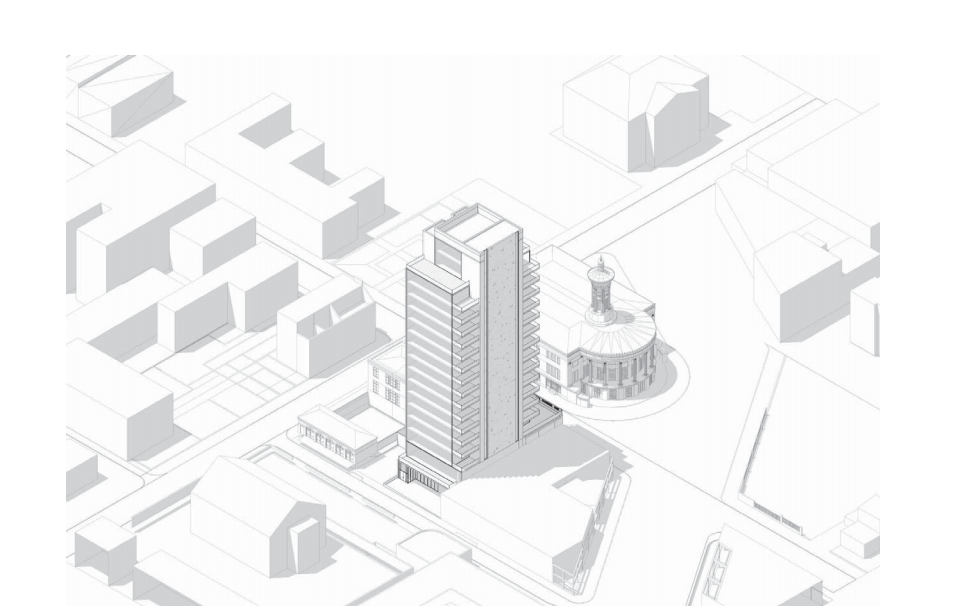
222-30 Walnut Street. Credit: Cecil Baker + Partners Architects
The development is also known under alternate addresses of 222 Walnut Street and 222-230 Walnut Street. A document submitted to the city as part of the review package describes the site as follows:
“The existing building, located on the south side of Walnut Street (extending through to Thomas Paine Place), between Third and Dock Streets, is listed on the Philadelphia Register of Historic Places as contributing to the Society Hill Historic District. The Historical Commission file name is 226 Walnut Street.”
“226 Walnut, the original three story brownstone office building at the center of the assemblage, was designed by Samuel Sloan and built in 1856. 222-24 Walnut Street is a Classical Revival style addition to 226 Walnut St. designed by Charles Barton Keen and built in 1917, for the Charles G. Mather and Company insurance firm. 228-30 Walnut Street is a 1950s expansion of Mather and Company, designed by John T. Grugger as a mirror image of the 1917 architecture. At this time, the Samuel Sloan brownstone facade was replaced with a Classical Revival facade to unite the three sections. Mather and Company occupied the building until 2000 when it became, until recently, the office of Nelson Architects. The existing brick facade facing Thomas Paine Place was constructed in the 1950s to unite the rears of 222-226 Walnut Street.”
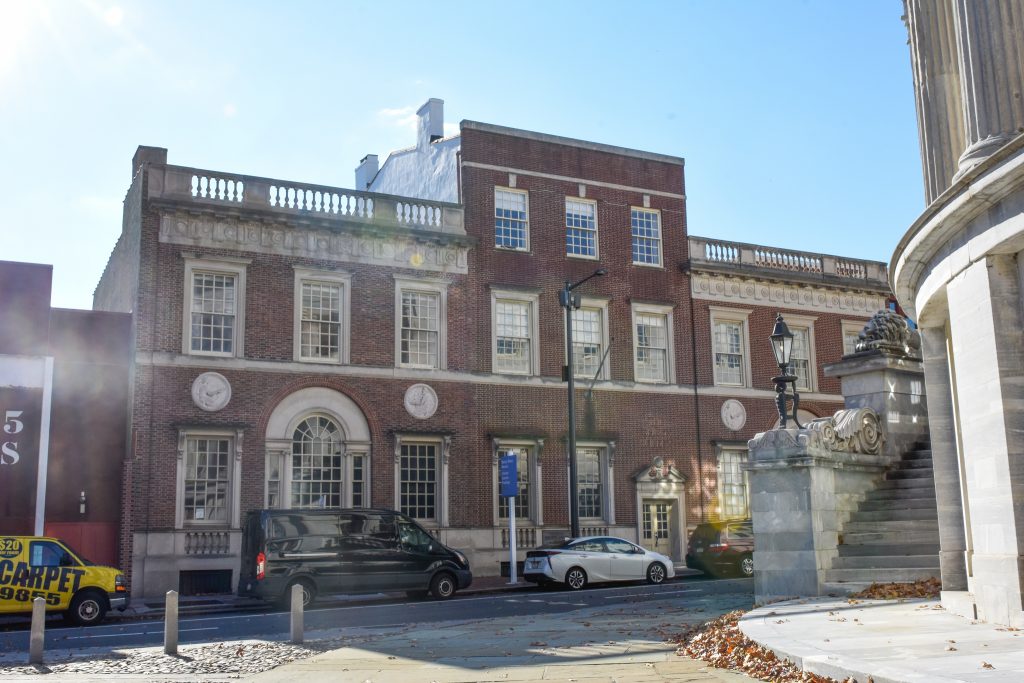
222-30 Walnut Street. Photo by Jamie Meller

Rear portion of 222 Walnut Street, proposed for demolition. Credit: Cecil Baker + Partners Architects
As described above, the development site consists of several historically notable buildings that have been hacked and grafted over time into one another, resulting in the current assemblage where some parts retain historic integrity and others lack any architectural merit. The development generally seeks to preserve the former and replace the latter with the new addition. Namely, the project would preserve portions of the older buildings and the entire Walnut Street facade, while demolishing the boxy, astylar, non-historic rear section built along Thomas Paine Place in the 1950s.
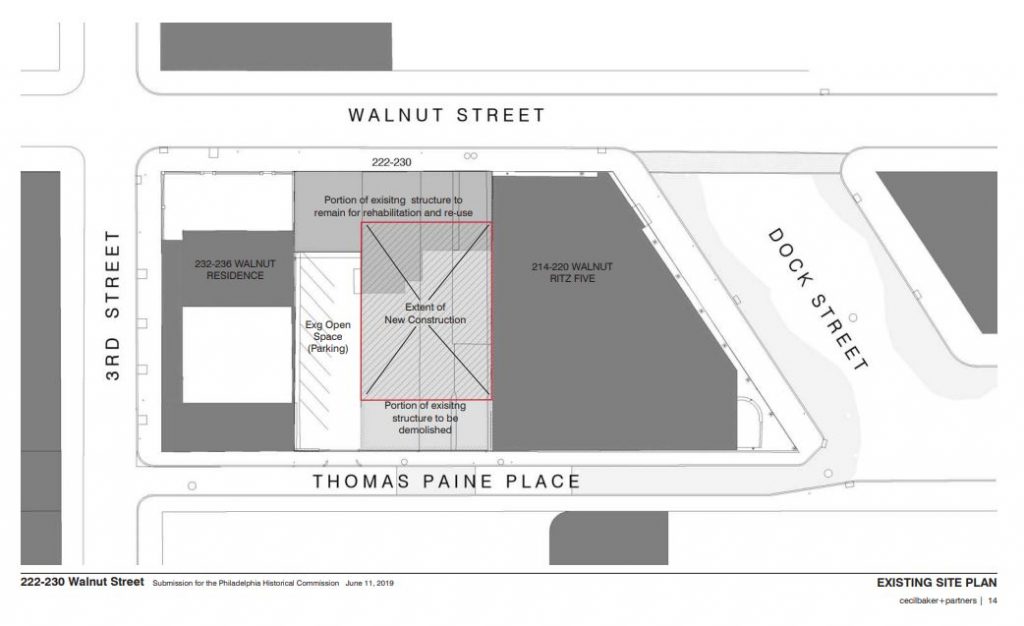
222-30 Walnut Street. Credit: Cecil Baker + Partners Architects
The tower would be set back considerably both from Walnut Street, where the front sections of the historic buildings would be integrated into the new structure, and Thomas Paine Place, where the street-facing portion of the 1950s building would make way for a small front garden.
The basement would hold a compact parking garage, serviced by two car lifts. The ground level would hold the lobby, amenity space, and the entrance to a triplex unit. Condominiums, most spanning an entire floor, would span the space above. Two residential elevators would service the structure.
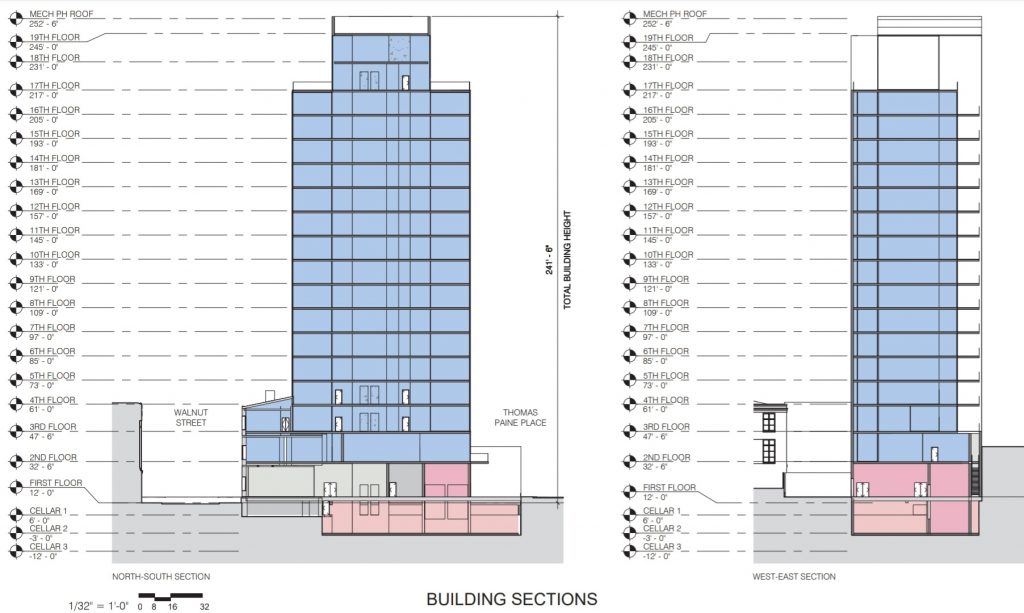
222-30 Walnut Street. Credit: Cecil Baker + Partners Architects
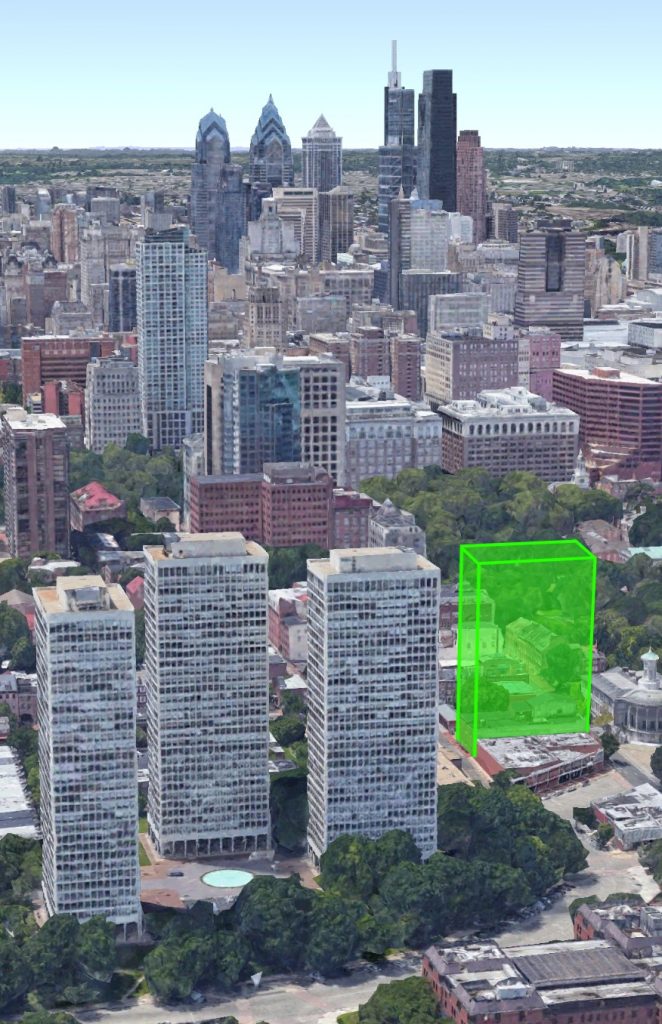
222-30 Walnut Street looking west. Original image from Google Earth, edit by Thomas Koloski
The building would be built as-of-right from a general zoning perspective. However, the historic protections associated with this section of the city, at the junction of Society Hill to the south and Old City to the north, adds an extra hurdle in the form of additional extensive reviews. The text quoted above comes from an application submitted in June 2019. No construction permits have yet been filed. As expected, our site visit found no signs of ongoing construction work.
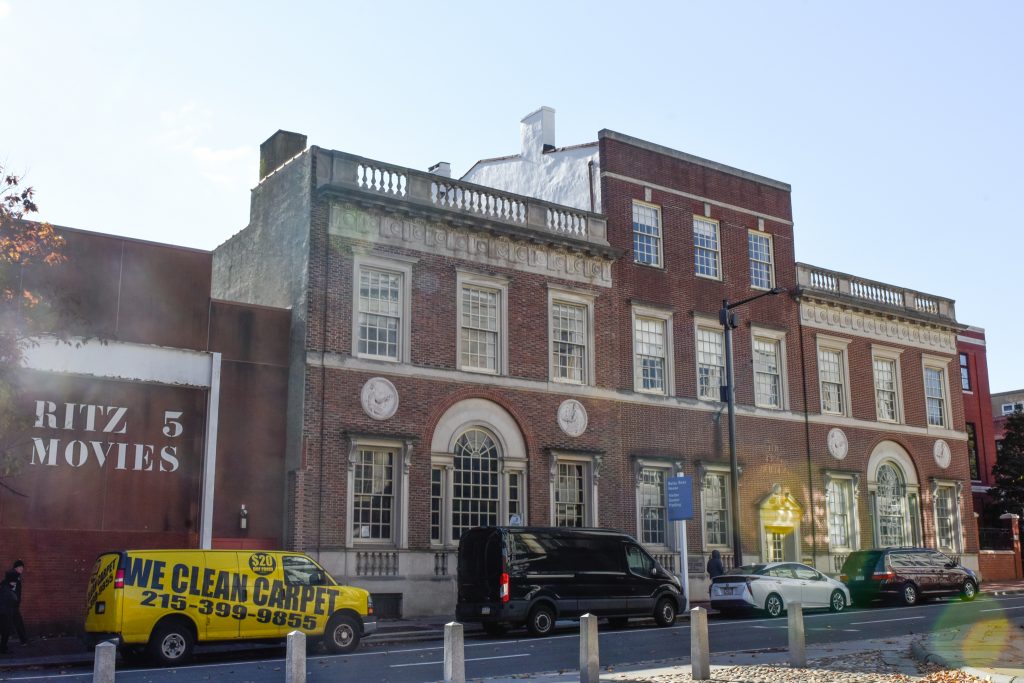
222-30 Walnut Street. Photo by Jamie Meller
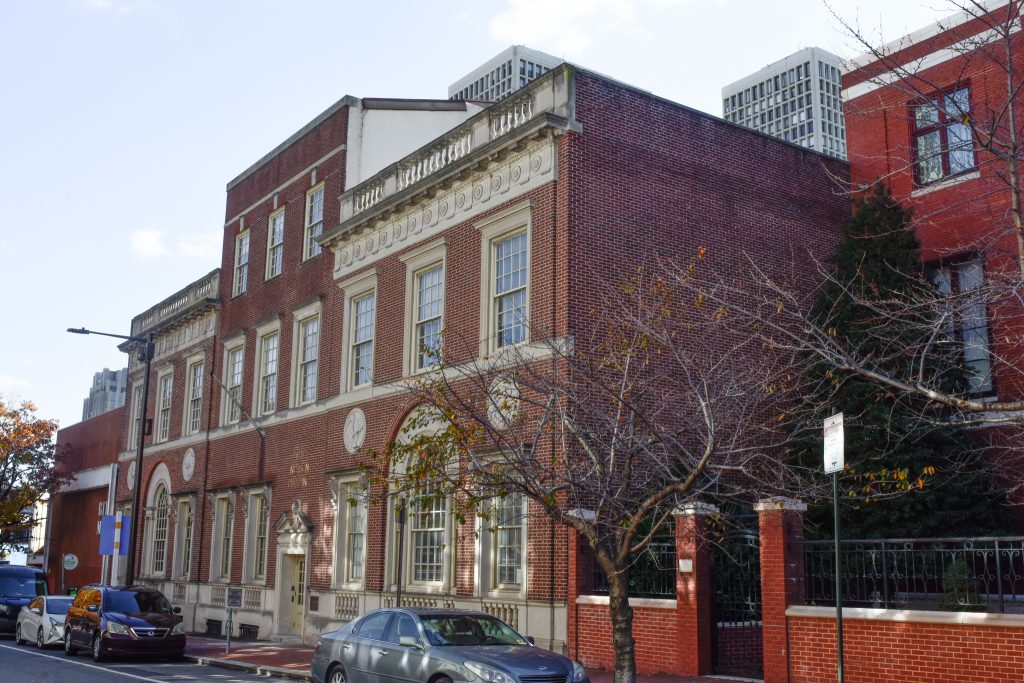
222-30 Walnut Street. Photo by Jamie Meller
If you are curious as to what’s going on on our sister websites, we invite you to visit New York YIMBY and Chicago YIMBY, which are running December Countdowns of their own. Happy holidays, and keep looking up!
Subscribe to YIMBY’s daily e-mail
Follow YIMBYgram for real-time photo updates
Like YIMBY on Facebook
Follow YIMBY’s Twitter for the latest in YIMBYnews



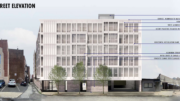
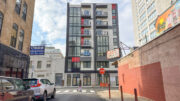

What a gross afront to the historic district. -Jim
This is a bit much in a historic district, there are plenty other places in the city to put this
Absolutely Horrible.
Pathetic that one of the most historic parts of the country will be dwarfed by an architecturally generic building. There are plenty parts of the city that could use this type of development, North, South, on the Delaware, etc.. Totally unnecessary from an economic development standpoint in historic Old City. A boon to developers, and the politicians they may grease, who couldn’t care a less about overall impact on the city. The Marriott tower under construction, just a block away, is far enough from the historic district to have very little such impact.
We let the historians decide what can be built or can’t be built on site. A by right supersedes their ironclad control of the site yet they think they are the law and order on what can be built.
What we can do is to build the new building on a site where the 1950s type building will be torn down and leave alone the historical buildings currently on site alone.
Skyscrapers in every square inch throughout Center City is the dream.
Anything else is a compromise from the NIMBY organization.
I don’t post here anymore because of all the NIMBY’s that have taken over.
Dream? Are you kidding? More like nightmare, especially in the historic districts of the birthplace of the nation. Tear down heritage, pave over greenspaces, cut off sunlight, choke off transit ways and poof we become Houston! Philly is a treasure because of what we have, a residentialy friendly, commercially viable, vibrant Center City core. True World Class cities like Montreal, Toronto, Amsterdam. Stockholm…and so on embrace and protect their historic districts, making them economic engines because of their protected status. Hundred story buildings can’t provide that and enhance a city’s quality of life.
No, but it works as Prozac for these fake city dwellers, that’s if they even live in the city. They scream for more blank buildings full of blank people.